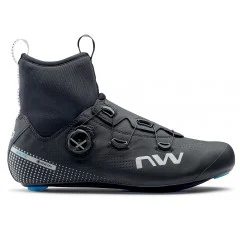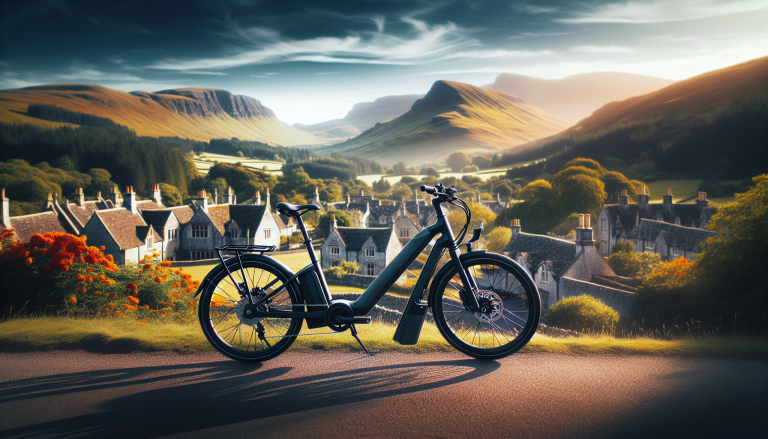Are you an avid cyclist who doesn’t let winter weather stop you from hitting the pavement? If so, then you know the importance of having the right gear, especially when it comes to footwear. Welcome to “Guide To Winter Cycling Shoes,” where we will provide you with a comprehensive overview of the best winter cycling shoes on the market. Whether you’re a casual rider or a seasoned pro, this guide will help you find the perfect pair to keep your feet warm, dry, and comfortable during those chilly rides. Say goodbye to cold toes and hello to winter cycling bliss!
Table of Contents
ToggleWinter Cycling Shoes
When it comes to cycling in the winter, one of the most important factors to consider is your choice of footwear. Winter cycling shoes are designed to keep your feet warm, dry, and comfortable, even in the harshest of weather conditions. With so many options on the market, it can be overwhelming to know which ones to choose. However, by considering your riding style, climate, insulation, waterproofing, and closure systems, you can make an informed decision and ensure you have the right pair of shoes for your winter cycling adventures.
Consider Your Riding Style
Before you start shopping for winter cycling shoes, it’s important to consider your riding style. Are you a dedicated road cyclist who spends hours on the saddle, or do you prefer off-road adventures on your mountain bike? Different riding styles have different requirements in terms of footwear. Road cyclists may prioritize lightweight and stiff-soled shoes for optimal power transfer, while mountain bikers may prefer shoes with more grip and protection.
Know Your Climate
Another important factor to consider when choosing winter cycling shoes is the climate in which you’ll be riding. Are you facing cold temperatures, heavy rain, snow, or a combination of all three? Understanding your climate will help you determine the level of insulation and waterproofing you’ll need in your shoes. For example, if you regularly cycle in sub-zero temperatures, you’ll want shoes with excellent thermal insulation to keep your feet warm and comfortable.
Insulated vs Non-Insulated
Insulation is key when it comes to winter cycling shoes. Insulated shoes are specifically designed to trap heat and keep your feet warm even in freezing conditions. They often have extra layers of insulation or thermal linings to provide maximum warmth. Non-insulated shoes, on the other hand, are more suitable for milder winter climates or for those who generate a lot of heat during their rides. They offer better breathability but may require additional measures, such as thicker socks, to keep your feet warm.
Waterproofing
Cycling in wet conditions can be challenging, especially if your shoes are not waterproof. Wet feet can become cold and uncomfortable, making it difficult to focus on your ride. Look for winter cycling shoes with effective waterproofing features, such as high-quality materials and sealed seams, to keep your feet dry. Some shoes also have waterproof membranes, like Gore-Tex, for enhanced protection against water ingress.
Closure systems
Closure systems play a crucial role in the fit and comfort of your winter cycling shoes. There are various closure options available, including laces, straps, and boa dials. Each closure system has its advantages and disadvantages, so it’s important to choose one that suits your preferences and needs. Laces offer a secure fit but can be difficult to adjust on the go. Straps provide quick and easy adjustments, while boa dials allow for precise micro-adjustments, although they can be more expensive.
Key Features to Look For
When shopping for winter cycling shoes, there are several key features you should look for to ensure optimal performance and comfort during your rides.
Thermal Insulation
Thermal insulation is a crucial feature to consider in winter cycling shoes. Look for shoes with adequate insulation to keep your feet warm in cold temperatures. Shoes with additional insulation layers or thermal linings offer extra warmth, ensuring your feet stay comfortable even in freezing conditions.
Breathability
While insulation is important, breathability is equally essential to prevent sweat buildup and keep your feet dry. Look for shoes with breathable materials and ventilation features such as mesh panels or perforations. Effective moisture management will help regulate your foot temperature and prevent uncomfortable dampness.
Grip and Traction
Winter cycling often involves riding on slippery and unpredictable surfaces. Therefore, shoes with good grip and traction are a must. Look for shoes with rubber outsoles that provide excellent grip on wet, icy, or muddy terrain. Deep tread patterns or lugs can also enhance traction and prevent slippage.
Ankle Support
Ankle support is crucial when it comes to winter cycling shoes, especially for off-road adventures. Look for shoes with a high collar or ankle cuff for added stability and support. This feature can help prevent ankle injuries and ensure a secure fit, even on challenging terrain.
Reflective Elements
Visibility is incredibly important when cycling in the winter, especially in low-light conditions. Look for shoes with reflective elements, such as reflective strips or logos, to improve your visibility to other road users. This simple feature can significantly enhance your safety on the roads.
Types of Winter Cycling Shoes
Now that we’ve discussed the key features to look for in winter cycling shoes, let’s explore the different types of shoes available on the market.
Winter Road Shoes
Winter road shoes are specifically designed for road cyclists who brave the cold and wet conditions. These shoes prioritize lightweight construction, stiff soles for efficient power transfer, and good insulation. They often feature waterproofing and reflective elements for added protection and visibility.
Winter Mountain Bike Shoes
For off-road cyclists, winter mountain bike shoes are the top choice. These shoes offer excellent grip, reinforced toe boxes for added protection, and ample ventilation to prevent excessive heat buildup. They also provide ankle support and waterproofing features to tackle the challenging terrain and unpredictable weather conditions.
Fat Biking Shoes
Fat biking shoes are designed for cyclists who love to tackle snowy trails and icy surfaces. These shoes have ultra-grippy outsoles with deep lugs to provide maximum traction on snow or ice. They often have excellent insulation to withstand freezing temperatures and are typically waterproof to keep your feet dry.
Commute/Urban Winter Shoes
If you use your bike for daily commuting or urban rides in the winter, you’ll need shoes that combine cycling performance with everyday functionality. Commute/urban winter shoes are designed to be comfortable both on and off the bike. They often have a more casual look and may feature additional insulation, waterproofing, and reflective elements.
Cycling Shoe Covers
If you already have a favorite pair of cycling shoes that you use year-round, you can also consider investing in cycling shoe covers for winter rides. These covers are designed to fit over your existing shoes, providing an extra layer of insulation and waterproofing. They are a convenient and cost-effective option if you prefer not to purchase dedicated winter cycling shoes.
Sizing and Fit
Getting the right size and fit is essential for optimal comfort and performance in your winter cycling shoes. Here are some key factors to consider when determining the correct sizing:
Consider Room for Thicker Socks
In the winter, you’ll likely be wearing thicker socks to keep your feet warm. When trying on winter cycling shoes, make sure there is enough room to accommodate the additional thickness of your winter socks. You don’t want your shoes to feel too tight or constricting when wearing thicker socks.
Check the Shoe Width
Different shoe brands and models have varying width profiles. It’s crucial to check the shoe’s width and ensure it matches the natural width of your feet. Shoes that are too narrow or too wide can cause discomfort and may affect your performance on the bike.
Try Them On with Cycling Insoles
If you use cycling insoles for additional arch support or comfort, make sure to try on your winter cycling shoes with the insoles inserted. This will give you a better sense of the fit and support provided by the shoes with your custom insoles.
Account for Toe Wiggle Room
Having some toe wiggle room is important to prevent cramped toes and ensure proper blood circulation. When trying on winter cycling shoes, make sure there is enough space in the toe box for your toes to move comfortably.
Consider Shoe Adjustment Mechanisms
Some winter cycling shoes come with adjustable features, such as BOA dials or Velcro straps, that allow you to customize the fit according to your preferences. Consider whether these adjustment mechanisms are important to you and try on shoes with various adjustment settings to find the most comfortable fit.
Maintenance and Care Tips
To ensure the longevity and performance of your winter cycling shoes, proper maintenance and care are essential. Here are some tips to keep your shoes in top condition:
Cleaning the Shoes
After each ride, take the time to clean your winter cycling shoes. Use a soft brush or cloth to remove dirt, mud, or any other debris that may have accumulated on the shoes. If necessary, use a mild detergent or shoe cleaner to remove stubborn stains. Avoid using any harsh chemicals or abrasive materials that could damage the shoe’s materials.
Drying the Shoes
It’s crucial to thoroughly dry your winter cycling shoes before storing them. Remove any removable insoles and let the shoes air dry in a well-ventilated area. Avoid placing them near direct heat sources, as excessive heat can warp or damage the shoe’s materials.
Storing the Shoes
Proper storage is essential to maintain the shape and integrity of your winter cycling shoes. Store them in a cool, dry place away from direct sunlight. Consider using a shoe storage bag or box to protect them from dust and moisture. Stuffing the shoes with newspaper or shoe trees can help maintain their shape.
Maintaining the Insulation
To ensure the insulation of your winter cycling shoes remains effective, avoid compressing or folding the shoes excessively. When not in use, keep them in an upright position or use shoe form inserts to prevent the insulation from deteriorating.
Replacing Worn Out Parts
Over time, certain parts of your winter cycling shoes may become worn out or damaged. This can include the outsole, insole, or closure systems. It’s important to regularly inspect your shoes and replace any worn-out parts to maintain their performance and extend their lifespan.
Extra Tips for Winter Cycling
In addition to choosing the right winter cycling shoes, here are some extra tips to enhance your winter cycling experience:
Layering Socks for Added Warmth
For extra warmth, consider layering your socks. Start with a thin, moisture-wicking sock as a base layer and add a thicker, insulating sock on top. This layering technique can provide additional warmth without compromising breathability.
Using Toe Covers
If you’re looking for a more cost-effective option to keep your toes warm, consider using toe covers. These small thermal covers attach to the front of your shoes, protecting your toes from cold wind and rain. They are easy to slip on and off and can be a great addition to your winter cycling gear.
Considering Heated Insoles
If you struggle with cold feet, even with the warmest winter cycling shoes, heated insoles may be the answer. These battery-powered insoles provide customizable warmth and can be easily adjusted to your desired temperature. They can make a significant difference in keeping your feet comfortable during winter rides.
Choosing the Right Pedals
In addition to winter cycling shoes, the choice of pedals can also impact your riding experience. Consider using pedals with larger platforms and adjustable traction pins to provide better stability and grip in wet and slippery conditions. Additionally, pedals with sealed bearings can help prevent water or dirt ingress, ensuring smooth and reliable performance.
Maintaining Good Visibility
Winter conditions often mean reduced visibility on the roads. To enhance your visibility to other road users, consider wearing high-visibility or reflective clothing in addition to the reflective elements on your winter cycling shoes. Adding front and rear lights to your bike will also increase your visibility, especially during dawn or dusk rides.
Expert Recommendations
To make your decision-making process easier, here are some expert recommendations for top winter cycling shoe brands and specific models to consider:
Top Winter Cycling Shoe Brands
- Pearl Izumi: Known for their high-quality and well-insulated winter cycling shoes, Pearl Izumi offers a range of options for road and mountain biking.
- Shimano: A trusted brand in the cycling industry, Shimano provides reliable and durable winter cycling shoes with excellent insulation and waterproofing.
- Giro: Giro’s winter cycling shoes combine performance and style, with options suitable for both road and off-road cycling. They offer good insulation and reliable waterproofing.
Recommended Winter Cycling Shoes
- Pearl Izumi X-Alp Elevate: These mountain bike shoes provide excellent insulation and ventilation, making them suitable for a variety of winter conditions.
- Shimano MW7: With a waterproof membrane and excellent insulation, the Shimano MW7 is a popular choice for winter road cycling.
- Giro Republic Winter Cycling Shoes: These shoes offer a balance between style and functionality, with good insulation and moisture management for urban winter rides.
Comparing Different Models
When comparing different models, consider the specific features that are most important to you. Pay attention to factors such as insulation, waterproofing, breathability, grip, and fit. Reading customer reviews and seeking expert advice can provide further insights into the pros and cons of each model.
Customer Reviews and Ratings
When exploring winter cycling shoe options, take the time to read customer reviews and ratings. These experiences can provide valuable insights into the performance, durability, and overall user satisfaction of a particular shoe model. Look for reviews from cyclists with similar riding styles and weather conditions to get a better understanding of how the shoes will perform for you.
Conclusion
Choosing the right winter cycling shoes is crucial for a comfortable and enjoyable cycling experience during the colder months. By considering factors such as your riding style, climate, insulation, waterproofing, and closure systems, you can find the perfect pair of shoes to suit your needs. Remember to prioritize thermal insulation, breathability, grip, ankle support, and visibility when searching for the ideal winter cycling shoes. With the right pair of shoes and the extra tips provided, you can continue cycling confidently and comfortably all winter long.







